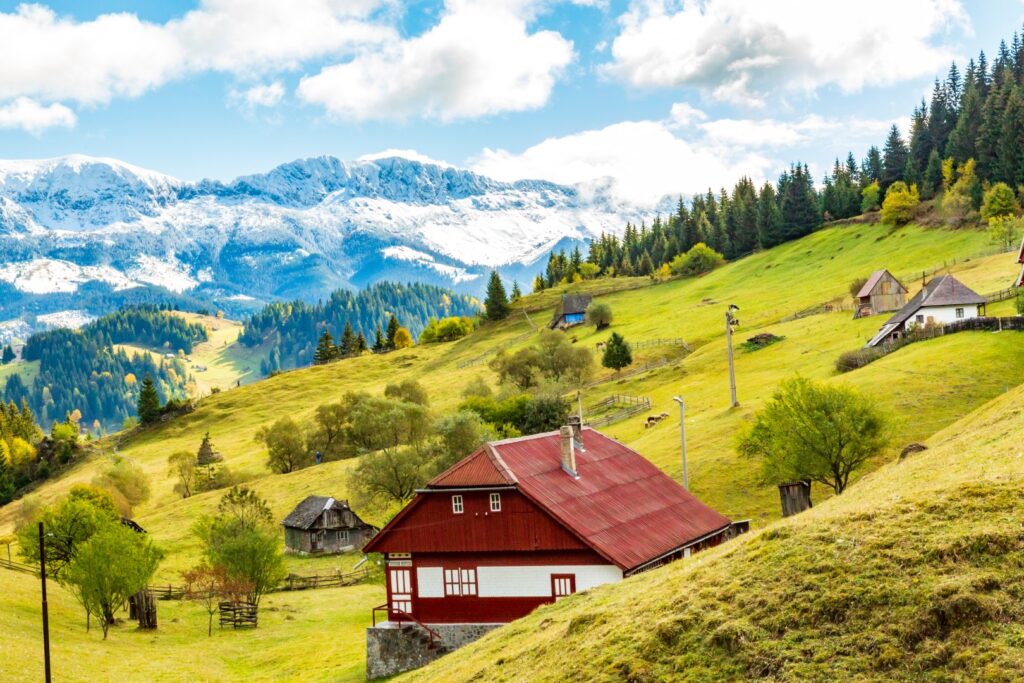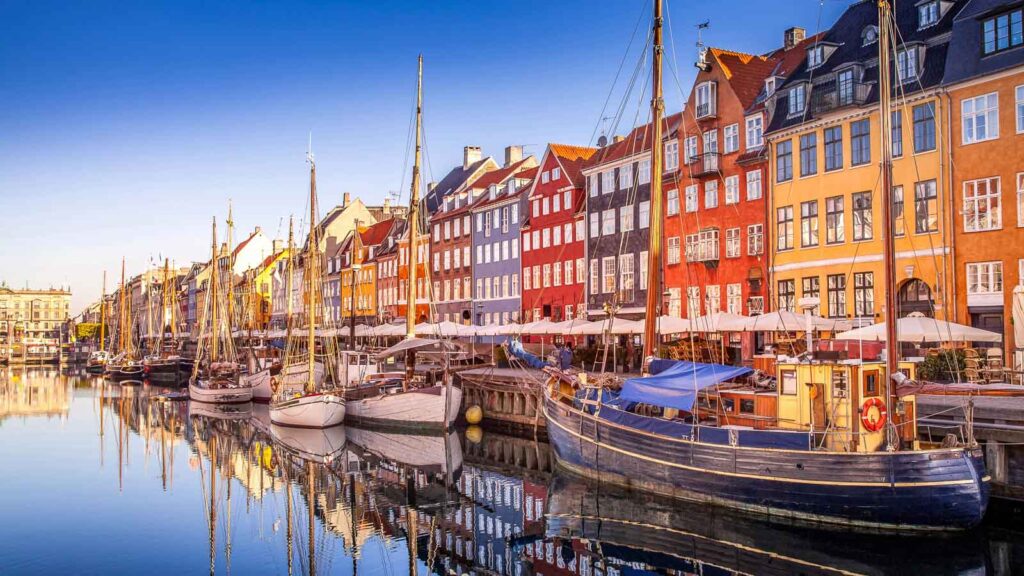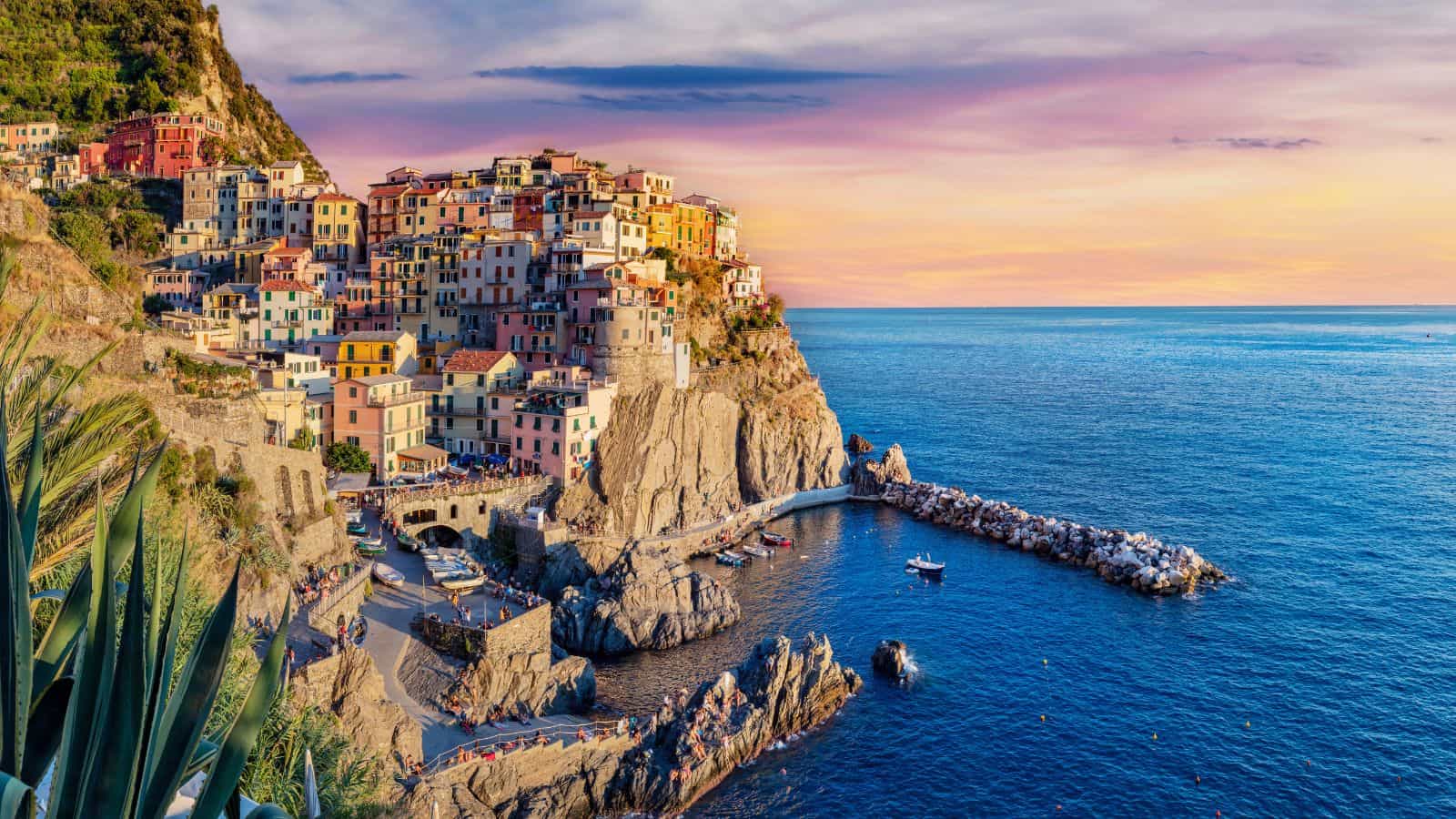25 Europe Packing List Essentials That Make Every Trip Effortless and Chic
Europe trips are a little different from most vacations. One morning you’re navigating cobblestone streets and centuries-old cathedrals, and by evening you’re sitting at a sidewalk café watching the city come alive. There’s also a huge difference between packing for the glaciers of Iceland vs the islands of Italy. Plus, which season you go makes a huge difference.
This Europe packing list is designed to keep travel simple, chic, and effortless. From versatile clothing that works across countries and climates to smart accessories that make trains, museums, and long walks easier, these essentials cover what you’ll actually use.

Things to Know Before Packing for Europe
Europe is a mix of cobblestoned streets, sleek metros, and weather that changes so fast I just always bring an umbrella. Packing light is key because you’ll be hauling your bag on stairs, trains, and narrow alleys, but you’ll also want to look put together since many cities lean stylish.
Aim for versatile outfits you can mix and match, comfortable walking shoes that aren’t sneakers-only, and layers that adjust to everything from chilly Paris mornings to sunny Rome afternoons.
Europe’s Seasonal Curveballs
Summer can be hot and sticky in places like Madrid or Athens, while London might drizzle on you every other day. Winters in northern and eastern Europe are biting cold with snow, while the Mediterranean stays mild but damp.
Spring (March–May)
Spring in Europe is beautiful but unpredictable. Paris might give you sunshine in the morning and a downpour by afternoon. Northern cities like Amsterdam and Berlin still feel chilly in March, but by May you’ll see outdoor cafes buzzing. Southern Europe warms up quickly.
Summer (June–August)
Summer is when Europe gets hot, crowded, and expensive. Spain, Italy, and Greece roast with temps often hitting 95–100°F, while northern regions like Scandinavia feel mild but surprisingly sunny. Even “cooler” cities like London or Paris can have heat waves that make un-airconditioned hotels rough. Expect festivals, long days (it barely gets dark in northern Europe in June), and packed beaches.
Fall (September–November)
Fall feels like two different seasons. September in Italy or Croatia is still beach weather, but by October, northern Europe cools down with crisp mornings and shorter days. November gets properly cold in places like Poland, Germany, and the UK, though the holiday markets start popping up.
Winter (December–February)
Winter in Europe can be brutal up north but magical in the right places. Scandinavia, Poland, and Germany dip well below freezing, and snow is common. In contrast, southern Europe (Spain, Portugal, southern Italy, Greece) stays relatively mild. Cities like Prague and Vienna shine in winter with Christmas markets, while ski regions in the Alps are buzzing.
Cultural Notes That Change How You Pack
Europeans dress casually but polished, so you’ll stand out less if you swap gym shorts for chinos or dresses. In churches like St. Peter’s Basilica or St. Mark’s in Venice, modest clothing is required, as in knees and shoulders covered. Many restaurants in big cities lean chic even when casual, so one nicer outfit pays off.

What to Wear in Europe: Everyday Clothes That Travel Well
Europeans nail the casual-but-chic look. You don’t need runway outfits, but gym shorts in Paris or neon tank tops in Milan scream tourist. A pair of sleek sneakers, a few mix-and-match basics, and one nice dinner outfit keep you looking polished without overdoing it.
- Lightweight tops – breathable and layerable.
- Jeans or neutral trousers – good for day and night.
- Casual dresses or skirts – versatile and easy to dress up.
- Layering sweaters or cardigans – for cooler days.
- Rain jacket or trench – classic Europe essential.
- Comfortable walking shoes – stylish sneakers or flats.
- Sandals or slip-ons – for warmer regions.
- Scarf – doubles as warmth and church cover-up.
- Evening outfit – for nicer dinners or theater.
Bags That Won’t Make You a Pickpocket Target
Day-to-day life in Europe means lots of walking and public transit. Crossbody bags are safer than backpacks in crowded metros, and tote bags are handy for market shopping.
- Crossbody bag with zipper – for security in crowds.
- Daypack – for hikes or long sightseeing days.
- Reusable shopping bag – plastic is banned in many countries.
- Money belt or hidden pouch – extra peace of mind in busy areas.
- Travel umbrella – sudden showers in London or Amsterdam.

Food, Health, and Everyday Comfort
Europe is street pretzels, wine on the go, and endless cafés. But it’s also long train rides, hot days in Italy, and the occasional stomach rebellion. A tiny first aid kit saves you when blisters hit in Prague or when tapas in Madrid don’t sit right.
- Hand sanitizer – for trains and street food.
- Reusable water bottle – many cities have public fountains.
- Electrolyte packets – hot days in Spain or Italy.
- Small first aid kit – blisters, headaches, stomach relief.
- Medications – in original packaging.
Tech That Actually Helps in Europe
Between Instagram-worthy sunsets, endless metro rides, and unreliable hostel Wi-Fi, tech can save you or slow you down. A universal adapter is gold: you’ll need both EU and UK plugs. Portable chargers are your lifeline on 12-hour train rides. And pro tip: download offline maps before you go.
- Universal adapter (Type C + UK plug) – covers most countries.
- Portable charger – for long travel days.
- Phone with offline maps – critical for metro systems.
- Camera or phone lens kit – architecture photos deserve it.
- Headphones – for trains and flights.
- E-reader or tablet – light entertainment for travel days.
Extras That Make You Feel Put Together
Europeans lean toward timeless style, so you’ll feel comfortable with simple pieces that elevate your look. A scarf or pair of sunglasses can make even travel-day clothes feel chic.
- Classic sunglasses – stylish and useful.
- Neutral accessories – jewelry that’s subtle but versatile.
- Travel-size steamer – keeps clothes fresh in small hotels.
- Notebook or journal – jot down trip details or train schedules.
🚫 What Not to Bring to Europe
Dragging giant luggage on cobblestones or into a fourth-floor walk-up will haunt you. Leave behind bulky coats (buy locally if needed), high heels that can’t survive cobbles, and expensive jewelry. You’ll never regret going lighter.
- Heavy luggage – too bulky on trains.
- High heels – useless on uneven streets.
- Too many electronics – more stress than benefit.
- Full-size toiletries – buy small and refill as you go.
Catherine Xu is the founder and author of Nomadicated, an adventure travel blog that helps travelers cross off their bucket list. Since discovering traveling in 2015, she has lived and journeyed to 65 countries across 5 continents and vanlifed the west coast USA for 2+ years. These days, she splits her time in Southeast Asia and California while sharing her travel stories and resources based on first-hand experiences. Catherine's other works has been referenced in major publications like MSN, Self, and TripSavvy.

